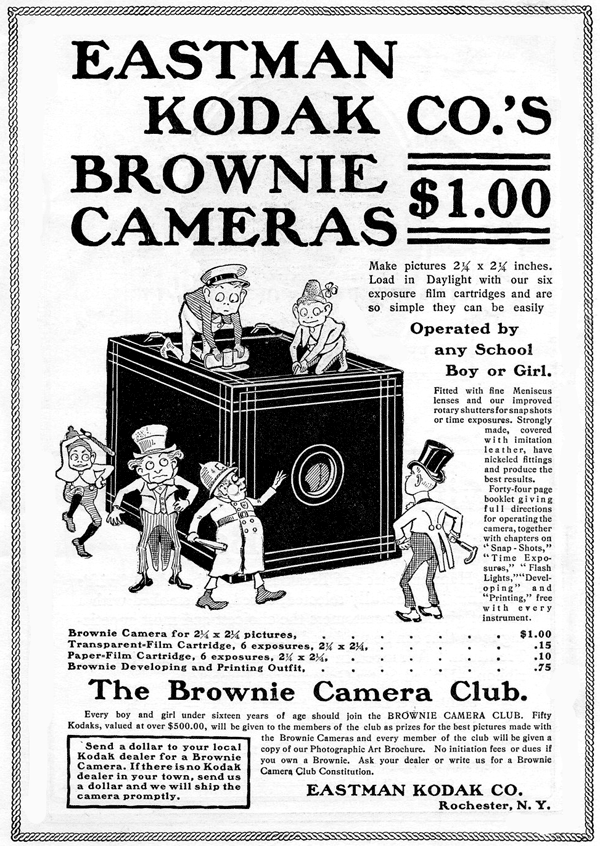
Documenting our lives through photographs went mainstream with the introduction of Kodak’s “Brownie” camera, introduced in 1900 at the price of $1; the “snapshot” was born, and with it arrived a new sense of self.
Prior to that, memories of travel to distant places were just that, memories, or perhaps copies of postcards bought but never sent to friends or family. Thus tales of the Taj Mahal or Grand Canyon were stories we told about places and perhaps personal adventures, misfortunes or grand coincidences, like unexpectedly running into Joan and Harry Miller in a small cafe in Paris, halfway across the globe. The world was slow and mysterious, represented in printed pages and black and white photos or line illustrations in multi-volume encyclopedias like Britannica, The World Book or what we had at my home, The Book of Knowledge.
Brownie snapshots suddenly made memories personal, the self-documentation of life; from newborns to college grads, “Themsies” – the photos of others, families and friends – filled bulging albums, alongside more formal photos taken by professional photographers at weddings, for business portraits, or at conventions. And snapshots of Paris, London or the Taj Mahal became proof that we were there, the Eiffel Tower or British Beefeaters looming behind us in photos graciously taken by strangers. Family albums, often with hand-written captions under the snapshots, were passed down to successive generations, rendering Uncle Bob and Aunt Gertrude gray specters unknown to grandchildren except by name. As cameras improved and color film was introduced, the photos piled up in drawers and boxes instead of albums, un-captioned and uncategorized artifacts of convenience and impulse largely lost and forgotten.
For every “Themsie” was the invisible photographer behind the camera saying “cheese” or asking to “take another one, but this time smile.” “That’s mom,” or “That’s Harriet Jones and her good-for-nothing husband Ronald” was what was said if and when the albums or boxes of photos were hauled out at Thanksgiving, and occasionally, “that’s me in my favorite shirt.” But that’s all changed with the convenience of the “Selfie.”
Now photographs are all about “Me.” “Me” in front of the Eiffel Tower, “Me” at the Ponte Vecchio in Venice, “Me” and my bag of French fries at Micky D’s. At Sao Jorge Castle in Lisbon, hungry street hawkers sell cheap Chinese-made “Selfie Sticks” for two Euros while gift-shop postcard racks are neglected and only half-filled. Tourists standing in the 90-minute line to get into the castle entertain themselves by taking Selfies and posting them on Facebook while the line slowly inches forward. The Cloud is filled with billions of selfies, the Eiffel Tower and Taj Mahal now mere evidentiary backdrop of time and place rather than reflecting fascination with exotic locales. The Selfie shifts the reference point from “where” to “whom” and with it the emphasis of experience and meaning.
Ironically, this self-fixation of the “me” generation separates rather than unifies by placing individual ego-identity at the absolute center of everything. It furthers the fragmentation of our common existence; rather than sharing, Selfies symbolize our growing isolation from each other. There are few things more boring to others than looking at one photo after another of the same face plastered before what becomes endlessly changing backgrounds which might as well be digitally created as well as real.
yes. now every phone has a camera attached. It is on the one hand super cool and on the other hand super addictive. It’s coolness makes it addictive. When I did a meditation retreat recently the addiction I missed the most was my iphone. I’m hooked. I now force myself to leave the house and leave it behind at times cause otherwise I’ll always refer to it in moments between moments….. They finally figured out how to totally take over our minds…..